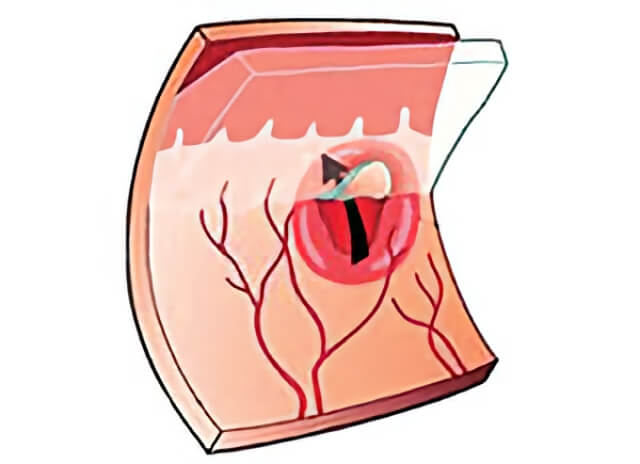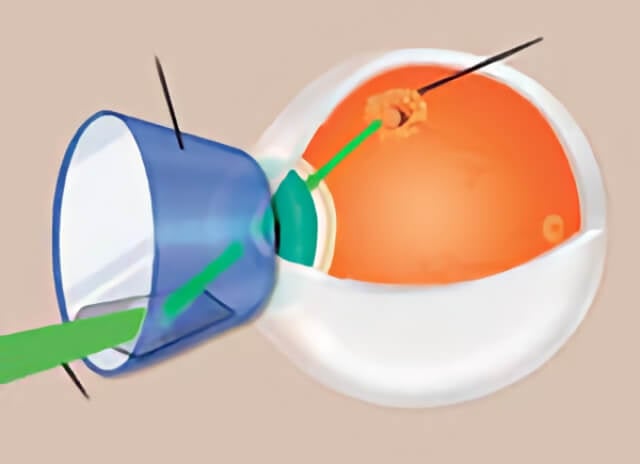Retinal Tear
How is a retinal tear dangerous for my eye?
Tears can easily act as a channel for fluid to track under the retina, causing a retinal detachment. When a retinal tear or hole hasn’t yet progressed to detachment, your eye surgeon may suggest an outpatient procedure which can usually prevent retinal detachment and preserve vision.
Learn more about retinal tears from ASRS
Información en español en el sitio web de ASRS
How are tears treated?
How is a laser treatment performed?
Your surgeon directs a laser beam through a special contact lens or a device mounted on the surgeon’s head. This procedure requires no surgical incision, and it causes minimal irritation. Some of the laser spots can be felt, but are rarely painful.
What about freezing (cryopexy) treatment?
Your surgeon briefly freezes the retina around the tear. After anesthetizing the eye, a freezing probe is applied to the surface of the eye directly over the defect. Cryopexy is used in instances where tears are difficult to visualize or reach with a laser or when fluid has already begun to seep under the retina. Your eye may be somewhat red and swollen afterwards.
What do I need to do afterwards?
Generally, a period of decreased activity is recommended for about 2 weeks. Of course, any increase in symptoms will require another examination, in case any new tears arise or a detachment develops.
Retinal Tear Images

A retinal tear typically occurs when the vitreous gell pulls up a flap of retina. This may allow fluid to get under the retina (black arrow).

If a retinal tear is caught before much fluid has gotten under the retina, a laser procedure can be done to seal the retina.
Schedule Retinal Tear Treatment in Northern California with Retinal Consultants Medical Group
Since 1975, Retinal Consultants Medical Group has been providing outstanding care to patients throughout Northern California, including Sacramento, Modesto, and Stockton. Our retina specialists and surgeons treat multiple vitreoretinal conditions, such as age-related macular degeneration and diabetic retinopathy. We invite you to contact us with any questions or schedule an appointment today.


